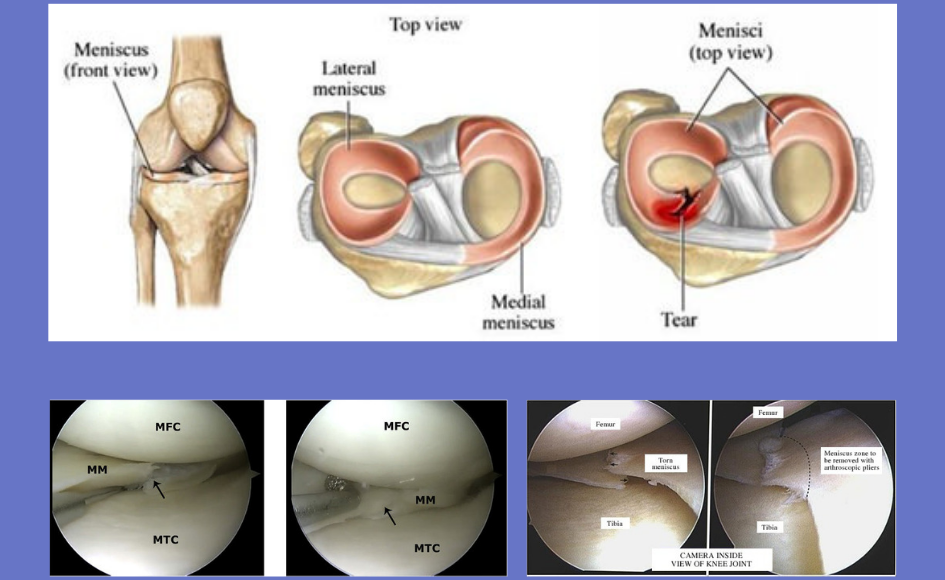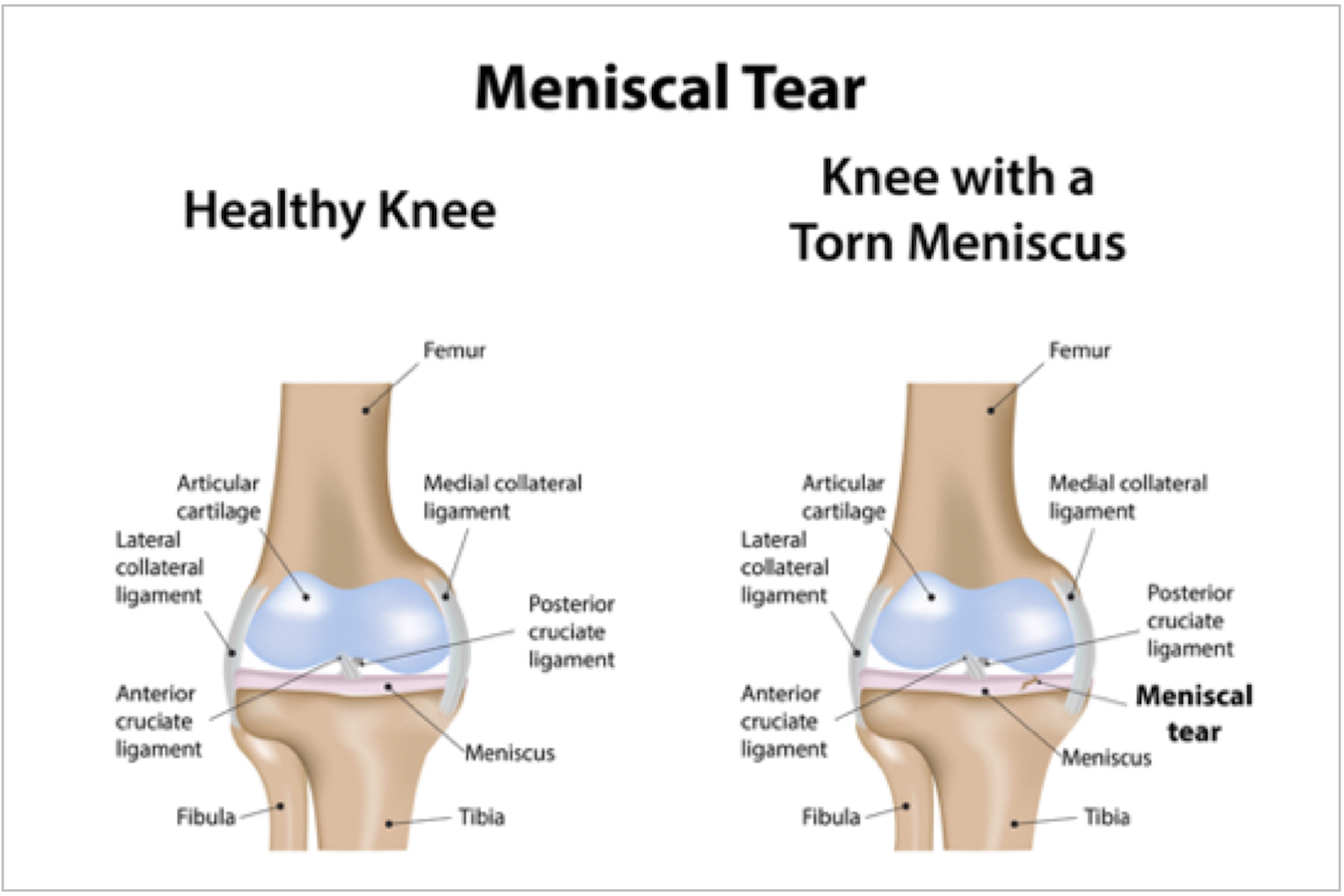
Meniscus Tear
Meniscus tear is probably one of the most common knee injuries, and it can be excruciating and debilitating. Here are some fast facts about the condition as well as its causes and treatment. 1. The meniscus is a piece of half ring shape cartilage found at the top of the tibia bone inside the knee joint. It protects the bones from the wear and tear by reducing the friction and cushions the joint, protecting it from the stress during bending, running, jumping, and walking movement.
2. A meniscus tear occurs when the knee is forcefully twisted, and can happen at a single event or over a period of time from gradual degeneration as a result of age and overuse. Sometimes, the torn part of the meniscus may break loose and get stuck in the knee joint, causing a restriction in movement or a “locking” sensation.
3. Meniscus tears usually occur during athletic activities and sports like football, basketball, hockey, tennis, and golf, where pivoting, running, and sudden stops occur frequently. The motions of kneeling and squatting can sometimes cause meniscus tear injuries too.
4. Other knee injuries often accompany meniscus tears, and older athletes or fitness enthusiasts are at a higher risk. This is because the meniscus and the other soft tissue structures in the knee weakens and loses its resilience with age or prolonged use, and hence can be damaged more easily.
5. The treatment for meniscus tear varies depending on the location, severity, and other underlying factors such as a preexisting condition. Treatment options include anti-inflammatory medications, compression, physical therapy, braces, and surgery.
If you experience a popping sensation, pain, and swelling in your knee, better to consult your health practitioner for a thorough examination and diagnosis.
#meniscustears #meniscalinjury #kneeinjuries #sportinjuries #athletes #orthopedics #meniscus #knee
(Image credit: 1. Internet; 2. S. TalHendrixM.D et al. 2017, Creative Commons license; 3. Fighting Fit Physiotherapy)







